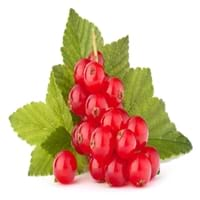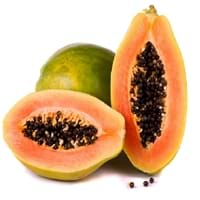Health Benefits
Cancer prevention, Gout treatment, Heart care, Regulation of heart rate, Treatment of rheumatism
Arthritis prevention, Asthma treatment, Cancer prevention, Heart care, Prevents macular degeneration, Prevents rheumatoid
General Benefits
Anti oxidant properties, Controls blood pressure, Cures fever, Digestive aid, Healing of wounds, Helps in weight loss, Strengthens bones
Anti-inflammatory properties, Boosts immune system, Digestive aid, Healing of wounds, Maintains healthy cholesterol level, Strengthens bones
Skin Benefits
Brightens and lightens complexion, Reduces wrinkles, Treatment of acne
Anti-aging benefits, Hydrates skin, Skin revitalization, Treatment of acne, Treatment of dark spots
Hair Benefits
Protects hair
Good conditioner, Promotes longer and healthier hair, Softening mask, Treatment of dandruff
Allergy Symptoms
Abnormally rapid heart rate, Anaphylaxis, Breathing difficulty, Hives, Itching, Swallowing difficulties
Abdominal pains, Carotenemia on excessive consumtion, Latex Allergy
Side Effects
Possibly unsafe during pregnancy
Allergic reaction, Skin problems, Possibly unsafe during pregnancy
Best Time to Eat
Best if taken as a breakfast (or empty stomach), As a snack in the late afternoon, Don't eat after meal, Morning time (before lunch)
As a snack in the late afternoon, Don't consume at night and before bed, Don't eat after meal
Vitamin B5 (Pantothenic Acid)
Vitamin C (Ascorbic Acid)
Vitamin K (Phyllochinone)
Calories in Fresh Fruit with Peel
Not Available
Calories in Fresh Fruit without Peel
Not Available
Calories in Frozen Form
Not Available
Calories in Canned Form
Not Available
Type
Berry
Melon, Tree fruit
Season
Summer
All seasons
Varieties
Rovada, Stanza, Red Lake, Junifer and Jonkheer van Tets
Coorg Honey Dew, Pusa Dwarf, Pusa Giant, Pusa Majesty, Pusa Delicious, Pusa Dwarf, Solo, Ranchi, Taiwan-785 and Taiwan-786
Taste
Sour, Tart
Luscious, Sweet
Origin
Europe
Mexico, Central America
Soil Type
Moist, Well-drained
Rocky, Sandy, Well-drained
Climatic Conditions
Cold
Warm, Without frosts
Facts about
- The albino version of red currants known as white currants, are often sold as different fruit.
- Red currant tea is healthy substitute for coffee.
- There are more than 150 varieties of red currants.
- Papaya seeds show contraceptive effects in male monkeys.
- Their seeds are used as a replacement for black pepper in some nations due to peppery taste.
- Papaya is known by funny names like paw paw or papaw and the mamao.
Top Producer
Russia
India
Other Countries
Belgium, France, Germany, Ireland, Italy, Netherlands, Poland, Portugal, Scotland, Spain, Sweden, United Kingdom
Brazil, Indonesia, Mexico, Nigeria
Top Importer
Germany
United States of America
Top Exporter
Russia
Mexico
Botanical Name
Ribes rubrum
Carica papaya
Synonym
Not Available
Not Available
Subkingdom
Tracheobionta
Tracheobionta
Division
Magnoliophyta
Magnoliophyta
Class
Magnoliopsida
Magnoliopsida
Subclass
Rosidae
Dillenhidae
Order
Saxifragales
Brassicales
Family
Grossulariaceae
Caricaceae
Species
R. rubrum
C. papaya
Generic Group
Saxifrage
Papaya
Difference Between Red Currant and Papaya
We might think that Red Currant and Papaya are similar with respect to nutritional value and health benefits. But the nutrient content of both fruits is different. Red Currant and Papaya Facts such as their taste, shape, color, and size are also distinct. The difference between Red Currant and Papaya is explained here.
The amount of calories in 100 gm of fresh Red Currant and Papaya with peel is 56.00 kcal and Not Available and the amount of calories without peel is Not Available and 43.00 kcal respectively. Thus, Red Currant and Papaya belong to Low Calorie Fruits and Low Calorie Fruits category.These fruits might or might not differ with respect to their scientific classification. The order of Red Currant and Papaya is Saxifragales and Brassicales respectively. Red Currant belongs to Grossulariaceae family and Papaya belongs to Caricaceae family. Red Currant belongs to Ribes genus of R. rubrum species and Papaya belongs to Carica genus of C. papaya species. Beings plants, both fruits belong to Plantae Kingdom.









